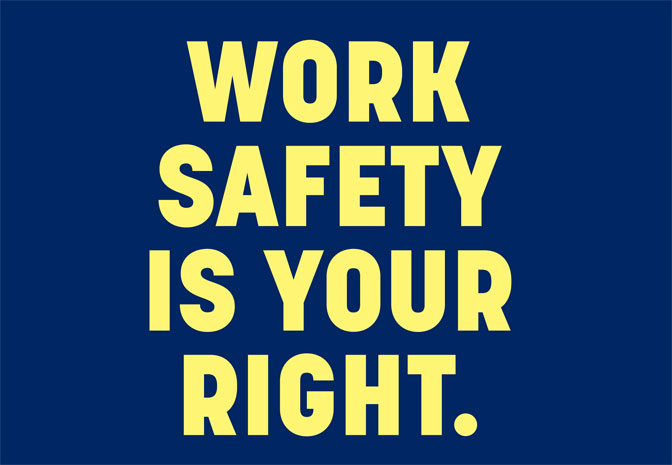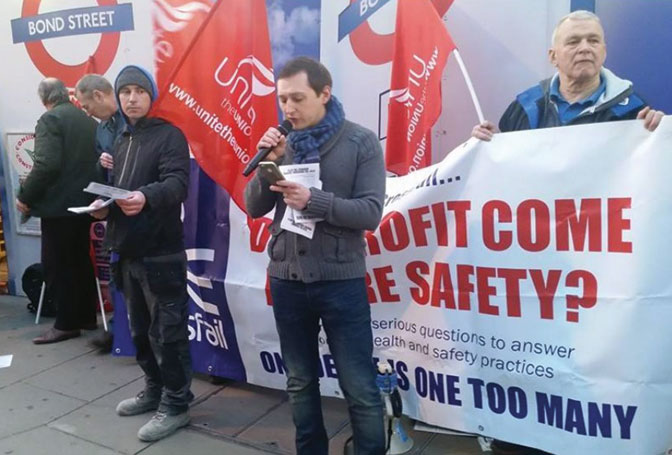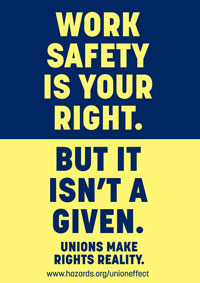
Staff forums, employee satisfaction surveys, whistleblowing phonelines and even suggestion boxes have all been lauded as ‘innovative’ methods of giving a voice to staff.
While presenting themselves as caring, benevolent employers, repeated scandals have shown that when conscientious clinicians and support staff use NHS whistleblowing procedures to highlight how a lack of staff affects patient care, rather than being applauded they have been ignored and victimised.
GAGGING CLAUSE Almost half a million women are gagged by confidentiality agreements after experiencing discrimination, bullying or harassment at work and are suffering as a direct consequence, a study has found. More
Only last year, Unite member Dan Collins was at the Royal Courts of Justice after he was dismissed from his job as an electrician immediately after he used a suggestion box to highlight an unsafe walkway on a Crossrail construction site.
The myriad of employee voice initiatives are often little more than window dressing explicitly intended to bypass union involvement.
If firms genuinely want to engage with their workforce on safety, perhaps they should use the statutory mechanism that has been in place since 1977: Consulting with union safety reps via a safety committee (Regulation 9, Safety Representatives and Safety Committees Regulations 1977 (SRSC)).
Make a committee work for you
Safety reps have been attending safety committees for over four decades.
My experience of training safety reps across all sectors has taught me that even the most well-established workplace safety structures will need re-evaluating periodically. We need to check that the committee is genuinely improving the health and safety of workers, or whether it’s just a talking shop.
Fortunately, the Brown Book guidance to the regulations provides a working checklist to assess whether any joint safety committee is actually doing what it’s supposed to do.
 COURT OUT Unite activist Daniel Collins won a major victory over Crossrail at London’s Royal Courts of Justice in 2023, eight years after he was fired for raising safety concerns (Hazards 161).
COURT OUT Unite activist Daniel Collins won a major victory over Crossrail at London’s Royal Courts of Justice in 2023, eight years after he was fired for raising safety concerns (Hazards 161).
Some companies allow safety to be discussed at regular staff forums where the workers’ representation is often made up of hand-picked individuals from each department rather than trained union safety reps. This is little more than a focus group.
Other firms, that may already have a regular joint union-management consultation committee, simply add safety as an agenda item at the bottom of a long list of other issues.
The Brown Book states that a safety committee should have ‘a separate identity’ so there is enough time to give safety the consideration is deserves (SRSC Regulation 9, Brown Book paragraph 73). We have to question whether this is happening.
The Brown Book also states that management representation ‘should not exceed’ that of representatives of the workforce (SRSC Regulation 9, Brown Book paragraph 84). Yet in some workplaces the safety committee is made up of managers from every department with one or two union safety reps invited along as an afterthought.
If the safety reps couldn’t attend because they were on holiday or off sick, the meeting would still go ahead without them. Their main business is senior management giving instruction to their junior managers about any changes to health and safety procedures.
Employers have an explicit legal duty (SRSC Regulation 4A) to consult with union safety reps before making decisions. But many employers have already made up their mind about a particular safety measure and merely give reps advance notice about when it will be implemented.
It is difficult to see how this type of committee is a genuine vehicle for consultation with union safety reps on issues such as risk assessments, safety training and new technology as required in law.
Decision makers
In other situations, unions might have upwards of 10 reps compared to a couple of relatively junior managers. These meetings are just a tick box exercise by the employer, with no real progress made because the management side never had the authority to make any decisions that might cost the company a few pounds.
Management attendees need to be senior enough to make decisions, or else the meeting is pointless and just going through the motions.
The Brown Book (paragraph 77) sets out a list of the functions for a safety committee that reads remarkably like a suggested agenda:
1 accident statistics and trends
2 aggregate absence statistics and reasons for absence
3 management safety reports
4 HSE reports
5 safety reps’ reports following an inspection
6 developing new safety rules and safe systems of work
7 safety training
8 safety information given to workers
9 acting as a link with enforcing authorities.
If your safety committee meets regularly and results in genuine improvements to workers’ health and safety, lucky you, we all want to work in a place like that.
But if your safety committee is all talk and no action, there’s work to do.
• TUC Safety representatives and worker involvement guidance.
Almost half a million women gagged at work
Almost half a million women are gagged by confidentiality agreements after experiencing discrimination, bullying or harassment at work and are suffering as a direct consequence, a study has found.
The campaign Pregnant then Screwed estimates 435,293 mothers (3.47 per cent) have been silenced by non-disclosure agreements (NDA) or confidentiality clauses in the UK following mistreatment at work.
NDAs are legal contracts that block individuals from sharing information which companies or people want kept private. Employers across the UK use NDAs to silence workers who allege sexual harassment, pay discrimination and other wrongdoing.
Researchers found that over threequarters of mothers (77.8 per cent) who signed an NDA say doing so harmed their mental health, while only around a quarter (26.6 per cent) of mothers who signed a confidentiality clause would sign it again if given the choice and less than three in 10 (30 per cent) think they were fairly compensated after their mistreatment.
One mother who signed an NDA following maternity discrimination commented: “I was asked to sign an NDA to cover maternity discrimination and a second time to cover harassment. The process of negotiating the NDA made me feel suicidal. The NDA was presented to me at the end of a gruelling process that had to end otherwise I would have had to sell my home. The lasting impact of the NDA was ruinous.”
Lauren Fabianski, of Pregnant Then Screwed, warned NDAs have “become a toxic tool that allows unscrupulous employers to quite literally pay victims to keep their mouths shut about horrific injustices.” She added: “They mask discrimination, harassment and criminal abuse from the public and even the employees’ friends and family. This immoral practice undermines laws meant to protect workers and creates a culture of secrecy where perpetrators face no consequences.”
Zelda Perkins, co-founder of Can’t Buy My Silence, said wielding NDAs to silence women about mistreatment in the workplace is “not only unethical but a further abuse that lasts indefinitely as NDAs are forever.” She added: “These agreements not only silence women when they are in a vulnerable position but can hide the settlement amount offered, which enables employers to pay them less than they are entitled to by law. This is not only immoral but in many cases illegal.”
Pregnant Then Screwed and Can’t Buy My Silence have launched a petition calling for legislation to bar NDAs from being used in cases linked to discrimination, harassment and abuse.
The survey findings are based on a nationally representative sample of 5,870 respondents randomly selected from a pool of 35,800 survey respondents.
www.pregnantthenscrewed.com • www.cantbuymysilence.com
SAFETY COMMITTED
There is a piece of jargon that corporate safety professionals use that always makes trade union safety expert Dave Smith wince – ‘employee voice’. He says to secure real improvements, unions need active safety reps and safety committees that make sure it is the collective union safety message that is heard.
| Contents | |
| • | Introduction |
| • | Make a committee work for you |
| • | Decision makers |
| Related stories | |
| • | Almost half a million women gagged at work |
| Hazards webpages | |
| • | Organising |
| • | Union effect |

